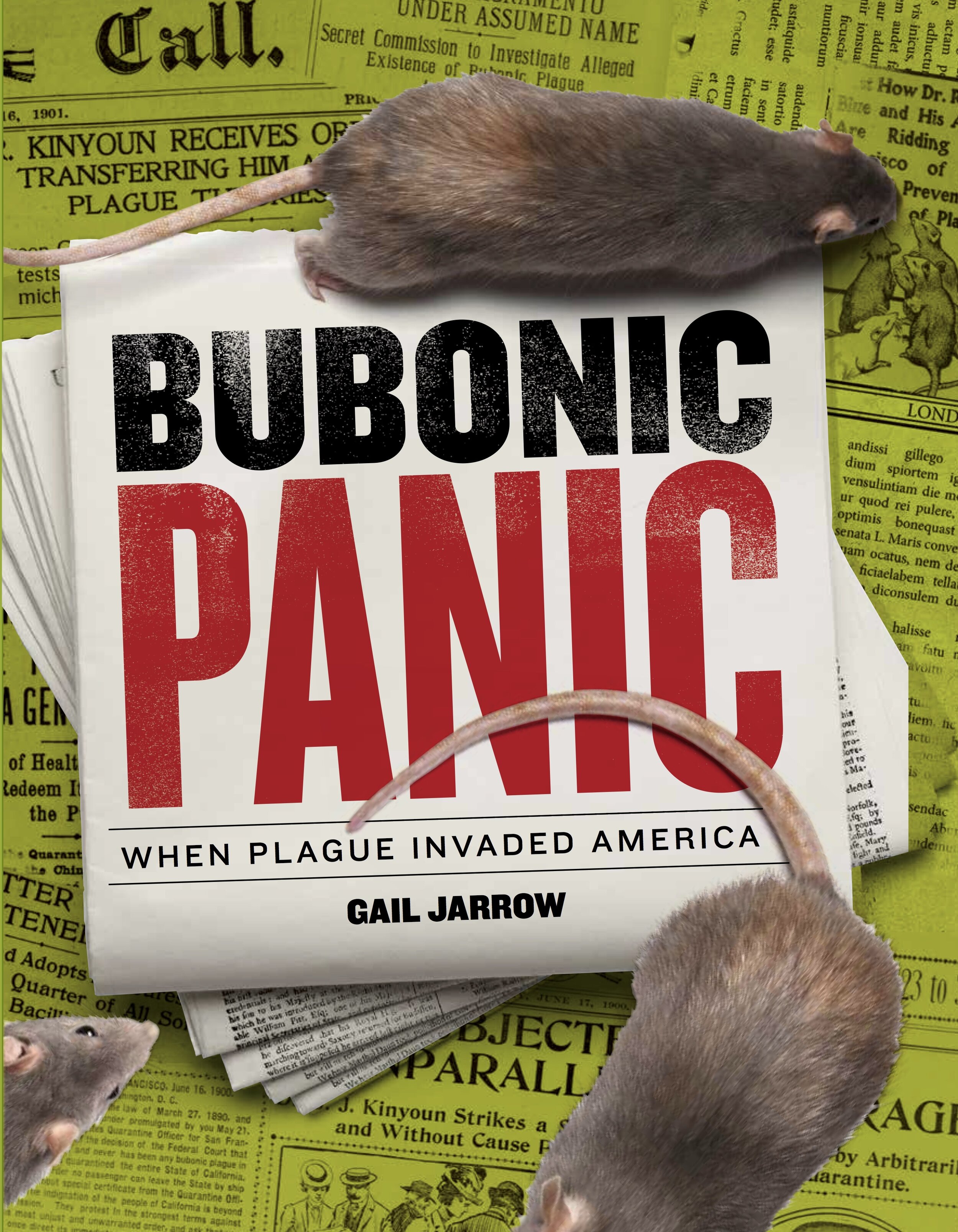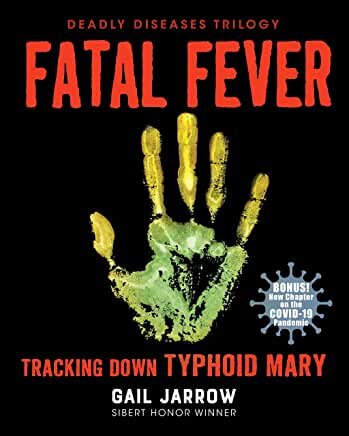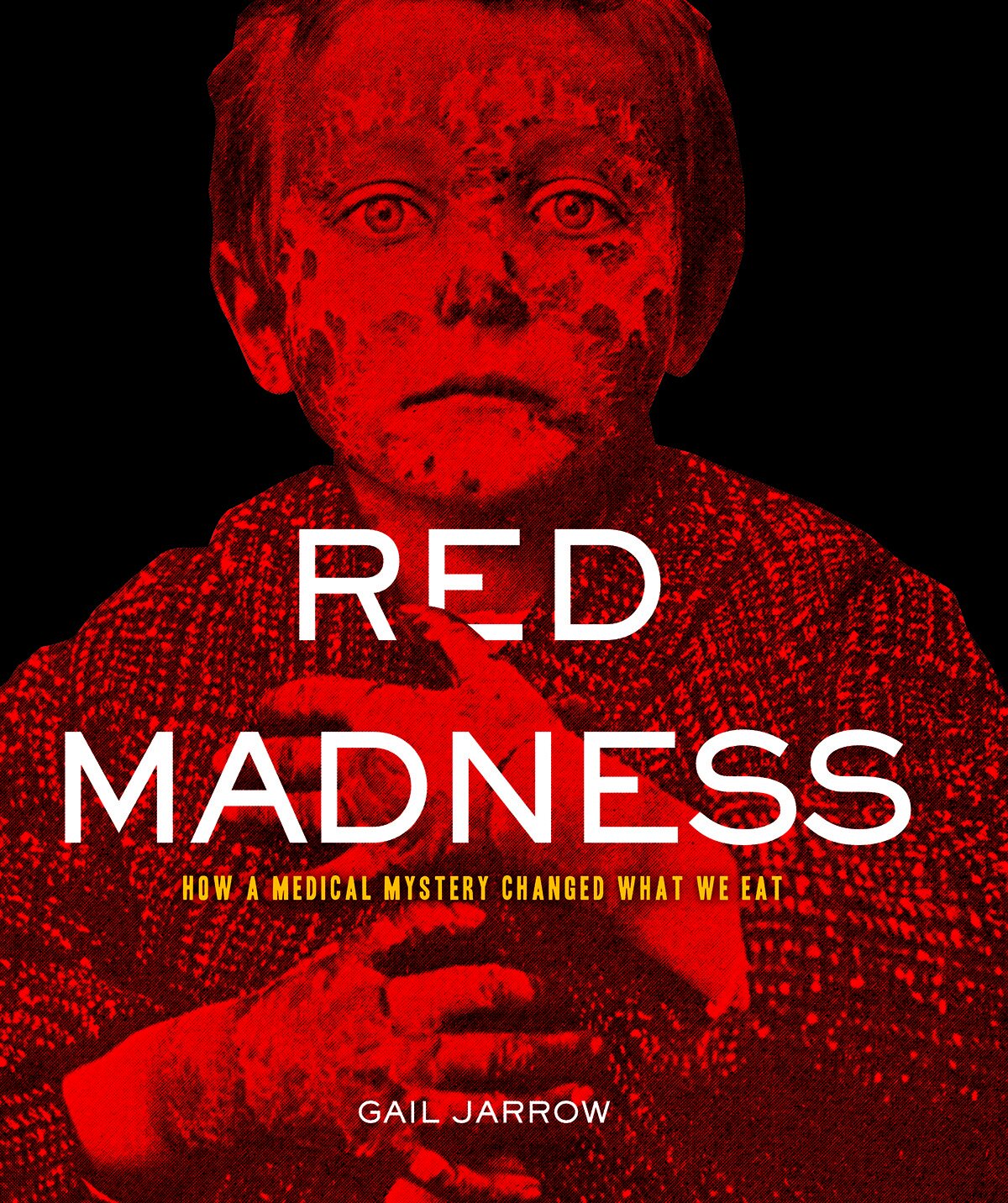THE DEADLY DISEASES TRILOGY
Resources
Bubonic Panic: When Plague invaded america
Educator's guide
The final title in the Deadly Diseases Trilogy tells the story of one of history’s worst human diseases. The book tracks plague from the beginnings of the First Pandemic ca. 542, to the Black Death of the 14th Century, to the scientific breakthroughs of the late 19th Century. In 1900, the disease invaded Chinatown, San Francisco, causing the first known plague epidemic in U.S. history. Readers will follow the outbreak through the eyes of victims, public health officials, doctors, politicians, and journalists. Finally, the book spotlights today’s health experts as they continue to cope with outbreaks throughout the world and the threat of plague as a bio-weapon.
Topics covered include biology; disease (germ theory, vectors, prevention, treatment, epidemiology); scientific discovery; American history (1900 to 1940s, Chinese immigration, San Francisco earthquake of 1906); government ( federal, California, & San Francisco authorities, U.S. Public Health Service, courts); world history. The book contains a glossary, timeline, source notes, bibliography, author’s note, recommended websites and books, and plague FAQs.
The PDF available HERE is an educator’s guide developed by the book’s publisher. It includes discussion questions and activities correlated with the Common Core State Standards.
More to Explore about plague
Online:
“Plague.” Centers for Disease Control and Prevention. cdc.gov/plague/
Plague by Rachel C. Abbott and Tonie E. Rocke. U.S. Geological Survey, Circular 1372, National Wildlife Health Center. pubs.usgs.gov/circ/1372/
“The Past, Present and Future of the Bubonic Plague” by Sharon N. DeWitte. TED-Ed. ed.ted.com/lessons/the-past-present-and-future-of-the-bubonic-plague-sharon-n-dewitte
Dr. Joseph J. Kinyoun: Father of the NIH.” National Institute of Allergy and Infectious Diseases. https://www.niaid.nih.gov/about/joseph-kinyoun
Books:
The Barbary Plague: The Black Death in Victorian San Francisco by Marilyn Chase. New York: Random House, 2003
Plague, Fear, and Politics in San Francisco’s Chinatown by Guenter B. Risse. Baltimore: Johns Hopkins University Press, 2012.
Chasing Secrets by Gennifer Choldenko. Wendy Lamb Books, 2015.
Angel Island: Gateway to Gold Mountain by Russell Freedman. New York: Clarion Books, 2013.
Fatal Fever: Tracking Down Typhoid Mary
Educator's Guide
The medical detective story takes place during the early 1900s when typhoid fever outbreaks were common in the United States. The book follows the epidemiologists and public health experts who studied the disease and developed ways to control its spread. Part of their work involved tracking down the source of a typhoid outbreak. The most notorious carrier of the disease was Irish immigrant Mary Mallon, aka Typhoid Mary.
Mary’s story raises questions we still grapple with today: When a deadly, highly contagious, and untreatable disease strikes, what do we expect health authorities to do? What government actions would—or should—we tolerate? Does the protection of a city’s population trump the rights and freedom of an individual?
Topics covered include American history (1900 to 1930s, New York City tenements, immigration), disease (germ theory, sanitation, current typhoid treatments & prevention methods); biology; medical history; government (New York City & State Health Departments, US Public Health Service, courts). The book contains a timeline, source notes, bibliography, a list of famous typhoid victims, and recommended books and websites.
The PDF available HERE is an educator’s guide developed by the book’s publisher. It includes activities and discussion questions correlated with Common Core State Standards.
More to Explore about Typhoid fever and typhoid mary
Online:
“The Most Dangerous Woman in America.” PBS and WGBH Educational Foundation.
www.pbs.org/wgbh/nova/typhoid/
The online companion to the Nova episode provides a program transcript, teacher’s guide, and links to information about the history of quarantines and the work of epidemiologists.“The Curious Career of Typhoid Mary” by George A. Soper. Bulletin of New York Academy of Sciences, October 1939.
www.ncbi.nlm.nih.gov/pmc/articles/PMC1911442/
Read George Soper’s 1939 account of how he tracked down Mary Mallon, the last of several published articles that he wrote about the case.“The Most Horrible Seaside Vacation.” Radiolab.
radiolab.org/story/169882-typhoid-mary/
Listen to a conversation about the Typhoid Mary case, including interviews with historians and a visit to abandoned North Brother Island.Typhoid Fever. Centers for Disease Control and Prevention.
www.cdc.gov/typhoid-fever/index.htmlTyphoid Fever. World Health Organization.
www.who.int/news-room/fact-sheets/detail/typhoid
Books:
Baker, S. Josephine. Fighting for Life. New York: New York Review of Books, 2013. (Baker’s autobiography)
Bourdain, Anthony. Typhoid Mary: An Urban Historical. New York: Bloomsbury Publishing, 2001.
Leavitt, Judith Walzer. Typhoid Mary: Captive to the Public’s Health. Boston: Beacon Press, 1996.
Keane, Mary Beth. Fever. New York: Scribner, 2013. (adult fiction)
Chibbaro, Julie. Deadly. New York: Atheneum Books for Young Readers, 2011. (YA fiction)
Red Madness: How a medical mystery changed what we eat
Educator's guide— PELLAGRA
This medical mystery tracks the spread and eventual control of pellagra, a vitamin deficiency disease that affected millions of Americans during the first half of the twentieth century. Topics covered include American history (1900 to WWII, cotton mills, sharecroppers and tenant farmers, Mississippi River Flood of 1927); world history; nutrition; disease; medical history; science (research methods, biology); government (US Public Health Service, states); biography. The book contains a timeline, notes, bibliography, and a list of recommended books and websites.
The PDF available HERE is an educator’s guide developed by the book’s publisher. It includes excellent discussion questions and activities aligned with the Common Core State Standards.
Pair RED MADNESS with these YA books about epidemic diseases…
Novels:
A DEATH-STRUCK YEAR by Makiia Lucier
SHADOW BLACKBIRDS by Cat Winters
FEVER 1793 by Laurie Halse Anderson
THE GREAT TROUBLE by Deborah Hopkinson
Nonfiction:
AN AMERICAN PLAGUE: THE TRUE AND TERRIFYING STORY OF THE YELLOW FEVER EPIDEMIC OF 1793 by Jim Murphy
OUTBREAK! PLAGUES THAT CHANGED HISTORY by Bryn Barnard
THE SECRET OF THE YELLOW DEATH: A TRUE STORY OF MEDICAL SLEUTHING by Suzanne Jurmain
INVINCIBLE MICROBE: TUBERCULOSIS AND THE NEVER-ENDING SEARCH FOR A CURE by Jim Murphy and Alison Blank
more to explore
Online
"Dr. Joseph Goldberger and the War on Pellagra.” Office of NIH History.
History.nih.gov/exhibits/Goldberger/
View an online exhibit about Goldberger’s life, including photographs.“BAM! Body and Mind.” Centers for Disease Control and Prevention.
bam.gov
This fun website is aimed at teens and includes information about food, nutrition, diseases, safety, and physical activity. Play the online games and try the recipes for healthy treats.“Dietary Guidelines for Americans.” U.S. Departments of Agriculture and Health and Human Services.
health.gov/dietaryguidelines
Site includes lists of vitamin, nutrient, and calorie content of foods. Read the government’s recommendations for improving diet, and find links to other resources on nutrition and physical activity.“Nutrition Information for You.” U.S. Department of Agriculture nutrition.gov Discover extensive information on nutrition and food. In the “What’s in Food” section, find out everything you want to know about your food, including nutrients, vitamins, and additives. Learn which foods have the highest niacin content. The “Life Stages: Adolescents” section is designed especially for teens.
Especially for Teachers
CDC
BAM! (Body and Mind) Teacher’s Corner
www.cdc.gov/bam/teachers/index.html
Find resources, links, activities, free handouts and downloads, games, and quizzes linked to national education standards for science and health.NERD ACADEMY
www.cdc.gov/scienceambassador/nerdacademy/
CDC’s site for “Nerd Academy Curriculum" has many helpful links to activities, resources, articles, books, and internet sites.DETECTIVES IN THE CLASSROOM
www.montclair.edu/Detectives/
Check out the epidemiology curriculum for science, mathematics, and health teachers in middle and high schools.
Books
Kraut, Alan M. Goldberger’s War: The Life and Work of a Public Health Crusader. New York: Hill and Wang, 2003. (The most recent biography of Goldberger.)
Parsons, Robert P. Trail to Light: A Biography of Joseph Goldberger. Indianapolis: Bobbs-Merrill, 1943.
Frankenburg, Frances Rachel. Vitamin Discoveries and Disasters: History, Science, and Controversies. Santa Barbara, CA: Praeger, 2009.
Mullan, Fitzhugh. Plagues and Politics: The Story of the United States Public Health Service. New York: Basic Books, 1989.
Roe, Daphne A. A Plague of Corn: The Social History of Pellagra. Ithaca, NY: Cornell University Press, 1973.
Etheridge, Elizabeth W. The Butterfly Caste: A Social History of Pellagra in the South. Westport, CT: Greenwood Publishing, 1972.


